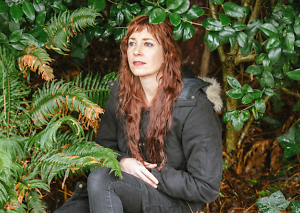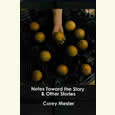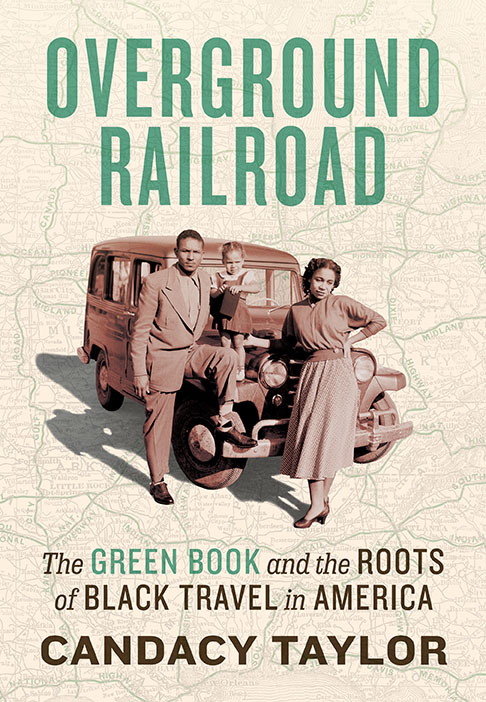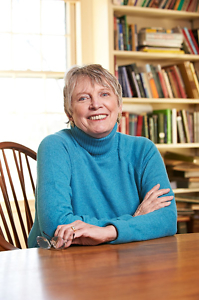Scars on Scars
With Shae, Mesha Maren delivers a poignant novel about love and addiction in rural Appalachia
Mesha Maren’s new novel Shae begins with the title character’s dubious memory of the beginning of star-crossed love. Shae’s recollection conflicts with her former lover Cam’s. “I thought it meant something deeply bad, the fact that we don’t remember it the same way,” Shae says. “But sometimes now I picture Cam’s version and it feels more real. I can smell the rain on the concrete and the way it fuzzes up the air, the heat turning the rain into steam.”

Shae’s voice, rendered masterfully by Maren, is at once lyrical, surreal, even hallucinatory, and nevertheless utterly persuasive as the words of a high school dropout from rural West Virginia. The skillful modulation of this extraordinary and extraordinarily endearing voice makes Shae a book that once begun must be finished, perhaps in a single sitting.
Shae is being marketed as a queer coming-of-age novel, but it is also a meditation on the challenges of teen parenthood and the horrors of addiction. The book humanizes issues too often depicted in detached stereotypes. Shae falls in love with Cam, sensing but not yet comprehending the process of self-discovery and transformation Cam is already undergoing. When Cam comes out as a woman, Shae and Cam must reckon with the realities of life for queer young people in red state America. They conceive and bear a child together, but Shae’s body alone endures a difficult delivery and an unexpectedly painful and long recovery. Enter OxyContin, and Shae’s decline and fall commences. Maren does not flinch from the harsh consequences of addiction, but she rescues Shae from becoming a lurid cautionary tale by emphasizing the interior life of the narrator with grace, lyricism, and sensitivity.
Shae is Mesha Maren’s third novel. The recipient of numerous awards and grants, Maren currently serves as an associate professor of the Practice of English at Duke University. She answered questions for Chapter 16 via email.
Chapter 16: Shae revolves around not one but two hot-button issues in contemporary American life: the opioid crisis and its impact on small communities, particularly in Appalachia, and the battles surrounding transgender rights, most heated in so-called red states. What challenges did you have to overcome to integrate these subjects so fluently and with such sensitivity?
Mesha Maren: First of all, I want to say thank you so much for talking with me about Shae and thank you for your thoughtful questions. To answer this first question, I think I have to back up a little bit and talk about my writing process. Although all my novels end up circling around “issues” (incarceration and immigration in the first two and as you mentioned the opioid crisis and transgender youth in this new one), I don’t set out to write about any issues at all. I set out to put images into language.
For me, the first few years of drafting a new novel involve diving as deeply into a state of unknowing as I possibly can. So far, all my books have begun with images that stick in my brain like a song and refuse to go away. These images look like little film stills. For Shae it was a young woman on a blue sofa, alone, watching the afternoon sunlight track across the room. For a long time, that’s all I had, just that image. I spent the years from 2017 through early 2020 taking longhand notes about this young woman who turned out to be Shae. I watched her pass the afternoon on that sofa and eventually other people arrived; a car pulled up in the driveway outside and Cam and Donna came into the room.
When I am getting to know new characters, it feels a lot like trying to get a skittish cat to trust me. I had a lot of practice with this growing up. The house I was born in sits on top of a mountain, and people dump animals along the road there. Every summer there were stray kittens in the ditches, and I would spend hours coaxing them toward my hands. Getting to know characters like Shae and Cam feels similar. I lay on my stomach for long periods of time listening to them.
Chapter 16: As a narrator, Shae’s voice rings true to the idiom of a high school dropout from rural West Virginia but also veers periodically into poetic lyricism and metaphor. How did you approach the crafting of this unique voice so persuasively?
 Maren: First-person narratives are so difficult. For me, at least. This was the first time I ever attempted to write a book-length narrative in first person. My students always reach for first person, and I am always warning them that it is so hard; every single word on the page has to be believably your character’s word, not the word of a narrator. But it is also kind of intoxicating to write for long periods of time in first person.
Maren: First-person narratives are so difficult. For me, at least. This was the first time I ever attempted to write a book-length narrative in first person. My students always reach for first person, and I am always warning them that it is so hard; every single word on the page has to be believably your character’s word, not the word of a narrator. But it is also kind of intoxicating to write for long periods of time in first person.
I always heard other writers talking about their characters’ voices whispering in their ears, and I was always kind of jealous because for the most part I think I am a very visual writer. I write from a place of images, not voices. But Shae was first person, very bluntly and obviously, and I realized I had to write the book that way or not write it at all. So, what I did was read it out loud over and over again, obsessively. I was doing most of the heavy early drafting of this book during the first few months of the pandemic. As I mentioned before, I had been taking notes on Shae and Cam for about three years by then, but the real narrative drafting began in 2020. Because of the pandemic, I was able to squirrel away in my cabin in West Virginia and spend eight hours a day talking to myself out loud.
Chapter 16: Shae is described on the jacket copy as “a queer coming-of-age novel.” Your debut novel is primarily about a lesbian romance; your second novel revolves, to some extent, around a gay man’s sexual awakening and self-discovery. Could you describe one way your understanding of the variations on gender and sexuality has changed or evolved through the process of writing these novels?
Maren: This is a great question. I think on one level I just like writing gay sex; it’s hotter and much more interesting than straight sex. Also, when I think about it, it is not just my understanding of sexuality that has evolved through the process of writing, but my understanding of being a human. One of the most addictive aspects of writing fiction is that I get to spend extended periods of time in the minds and lives of other humans, in high moments and low moments but maybe more electrically for me, I get to spend time in their mundane moments. There is this Alice Munro quote [from the story “Forgiveness in Families”] that I love, where she says,
I thought about Mother’s life, the part of it I knew. Going to work every day, first on the ferry then on the bus. Shopping at the old Red-and-White then at the new Safeway — new, fifteen years old! Going down to the library one night a week, taking me with her, and we would come home on the bus with our load of books and a bag of grapes we bought at the Chinese place, for a treat. Wednesday afternoons too when my kids were small and I went over there to drink coffee and she rolled us cigarettes on that contraption she had. And I thought, all these things don’t seem that much like life, when you’re doing them, they’re just what you do, how you fill up your days, and you think all the time something is going to crack open, and you’ll find yourself, then you’ll find yourself, in life. It’s not even that you particularly want this to happen, this cracking open, you’re comfortable enough the way things are, but you do expect it. Then you’re dying, Mother is dying, and it’s just the same plastic chairs and plastic plants and ordinary day outside with people getting groceries and what you’ve had is all there is, and going to the library, just a thing like that, coming back up the hill on the bus with books and a bag of grapes seems now worth wanting, O God doesn’t it, you’d break your heart wanting back there.
I think about this quote a lot in terms of my own life but also in terms of what I want to understand about my characters’ lives. I want that bag of grapes, and I want to capture the fact of its mundanity and exceptionality being always truly coequal.
Chapter 16: Shae loses custody of her daughter because of an addiction which begins as a consequence of her pregnancy, and her former partner Cam becomes the child’s mother. How did you envision your treatment of parenting and/or motherhood regarding both Shae’s decline and Cam’s transition?
Maren: I have a sister who is three and a half years older than me. For as long as I can remember, my sister has loved babies and pregnancy and motherhood. She is a labor and delivery nurse. I have always been ambivalent about children, ambivalent at best really; at times I have been downright negative about them. Also, pregnancy terrifies me. I think with Shae, I wrote into that terror. I also wrote into a space in my mind populated by fictional women with ambivalence toward motherhood: Barbara Loden’s Wanda, Joan Didion’s Maria Wyeth, Joy Williams’s Pearl, Helen Garner’s Nora, and Kate Chopin’s Edna.
Chapter 16: In preparing to write Shae, what other novels or works of art influenced your conception of the story and its tone? Do you have any recommendations?
Maren: I always have a stack of books on my desk that I think of as my compass. Sometimes I reread these books, but mostly it is just their physical proximity that’s important for me. When I read your question, I went in search of the original stack of books that lived on my desk during the early months of writing Shae. I found a photograph from March 22, 2020. In the photograph I can see Gregory Crewdson’s photobook Beneath the Roses; Larry Brown’s novel Fay; Anne Carson’s Glass, Irony and God and Eros the Bittersweet; Justine Kurland’s photobook Girl Pictures; Denis Johnson’s Jesus’ Son; Brenda Ann Kenneally’s photobook Upstate Girls; Joan Didion’s Play It as It Lays; and a DVD of Harmony Korine’s Gummo.
Chapter 16: How much were you influenced before and during the writing of Shae by the reporting on the opioid crisis and the continuing attack on LGBTQ+ rights? Were you in any way driven to humanize issues too often depicted in abstract, sensational, and/or prejudicial terms?
Maren: The moment I allow in thoughts or feelings about how other people think about social issues is the moment my fiction dies, or my interest in it dies. I care about sentences. I don’t focus on crises and social issues when I am drafting. I focus on the rhythm each sentence is asking for. I try to stay in that trance for as long as I possibly can. I try to stay in a place where I’m just asking myself, “Is that really the best word to describe that dead tree branch?”
Of course, that is not to say I am unaware of the social issues that might surround the characters in my book, but I see it as my job, or maybe more so my joy, to get the language right, to tend to the way each word bumps up against the next, and then it is somebody else’s job to figure out where and how these sentences and characters fit in the larger social landscape.

Ed Tarkington is the author of two novels, Only Love Can Break Your Heart (2016) and The Fortunate Ones (2020). He lives in Nashville.





